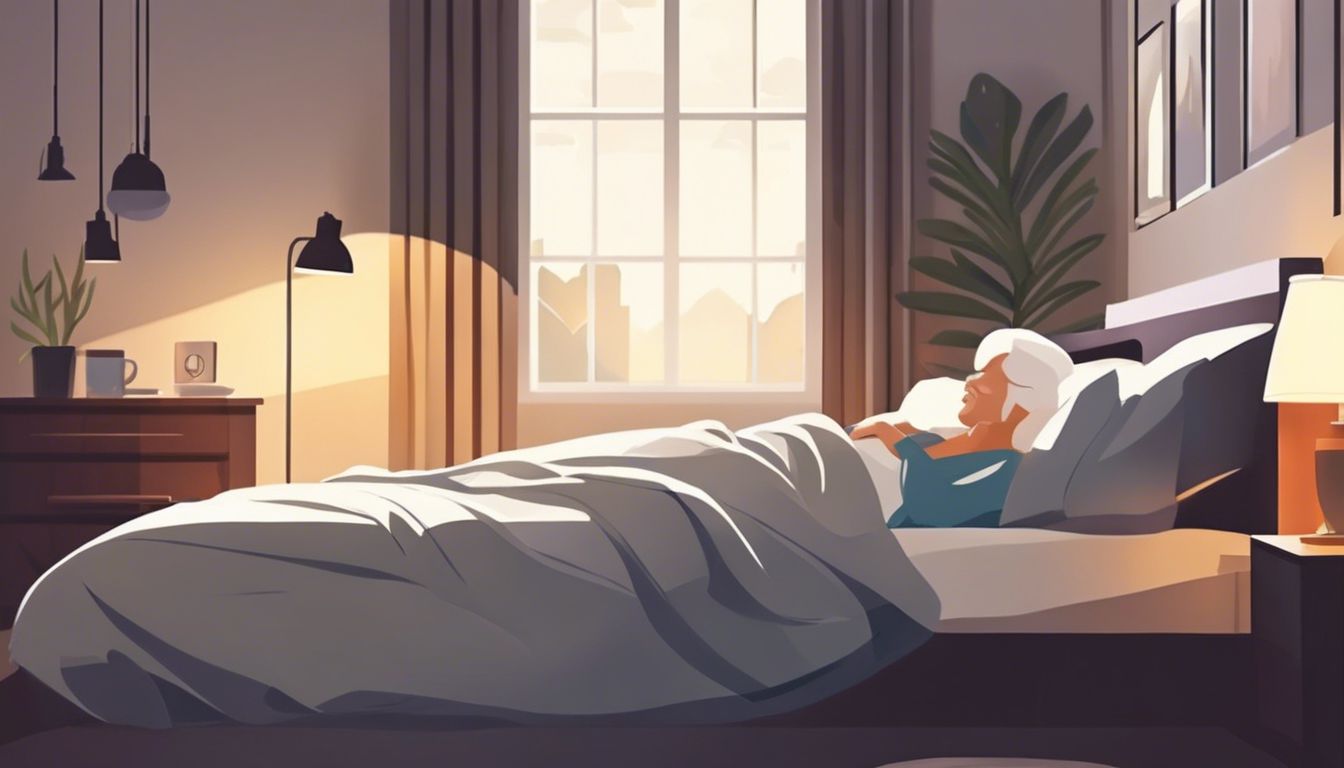Making a caregiver’s bedroom feel right can be hard. One fact stands out: calming colors like cool blues make the space feel more like home. Our article will show you how to mix safety features and personal touches for a perfect room.
Keep reading for great ideas.
Key Takeaways
- Adjustable beds are great for caregivers. They help with getting in and out of bed. They also make sleeping more comfortable.
- Floors should not slip to stay safe. Use hardwood or laminate with safety strips. Keep rugs from moving.
- Pick calming colors like blue and green for the walls. Soft textures make the room cozy.
- Add personal items like photos and quotes. This makes the space feel special.
- Think about costs, but know some things might save money later, like tax breaks on certain buys.
Essential Features for a Caregiver’s Bedroom

A caregiver’s bedroom needs special things to make life easier and safer. Look for beds that move for more comfort and floors that don’t slip to prevent falls.
Adjustable Beds for Comfort and Accessibility
Adjustable beds are key for caregivers looking after someone in elder care. These beds let you change the bed’s height from 25 to 36 inches. This makes it easier for people getting in and out of bed.
It also helps with finding a comfy position to rest or sleep in. Beds like these often have safety features, such as railings, to prevent falls.
Caregivers find that adjustable beds can greatly help in nursing homes or at home. These beds allow for better care and comfort, making tasks simpler.
Adjustable beds offer the flexibility needed to ensure comfort and safety in caregiving.
Slip-Resistant Flooring for Safety
Slip-resistant flooring is key for safety. It helps prevent falls. Hardwood and laminate are good choices. Add safety strips to them for extra grip. This is important for everyone, especially caregivers who move around a lot at night or quickly in emergencies.
Secure rugs well to the floor. This stops them from moving and causing trips. Bright illumination can also help see better, reducing accidents even more. So, keep floors clear and well-lit for the safest caregiver bedroom possible.
Personalizing the Space
Making a caregiver’s bedroom feel personal is key. Choose soothing wall colors and cozy fabric types to create a calm area. Add items that uplift them, like photos or quotes that inspire.
This makes the room theirs, truly special for rest and recharge.
Use of Calming Colors and Soft Textures
Pick calming colors like cool blue, green shades, and earthy tones for the room. These colors bring peace and make the space feel like home. Soft textures add comfort. They help caregivers relax after long days.
Avoid dark colors in bedrooms to stop confusion.
Add soft blankets and smooth bed sheets next to natural light. This setup makes a cozy spot for both rest and quick breaks during work hours. Place these items near a bedside table for easy reach of personal items or assistive devices if needed.
Such design choices show care and thought for the caregiver’s well-being in every detail of their bedroom space.
Incorporating Personal and Inspirational Items
Caregivers need a space that brings peace and inspiration. Adding personal touches makes a room feel like home.
- Choose calming colors for walls and soft textures for bedding to create a tranquil atmosphere.
- Hang inspirational quotes or artwork that motivates and uplifts spirit.
- Display photos of loved ones and happy memories to keep connections strong.
- Add decorative pillows and trendy accent lighting for style and comfort.
- Keep favorite blankets close by for warmth and security.
- Place organic window treatments to control light and add natural beauty.
- Encourage caring for live plants to bring freshness and life into the space.
- Organize keepsakes on shelves or in casegoods to personalize the area without clutter.
- Consider expenses wisely; invest in quality items that ensure comfort and durability, like an adjustable bed or slip-resistant flooring, which may be tax deductible depending on your situation.
- Explore options like personal loans or credit if needed to cover lump sum investments in essential features or interior design updates.
Creating a personalized bedroom helps caregivers feel valued and supported in their important role.
Conclusion
Creating a comfy space for caregivers starts with the right gear and colors. Adjustable beds make rest easy. Slip-resistant floors keep things safe. Cool blues and soft pillows add peace.
Personal touches, like family photos, inspire every day. This way, bedrooms turn into perfect spots for both rest and care.
FAQs
1. What’s the first step to personalize a bedroom for caregivers?
Start by considering their interests and needs, then design accordingly.
2. How can I make the bedroom more accessible for a caregiver?
A stair lift is one great solution… It provides easy access to upper-level bedrooms.
3. Can incorporating the caregiver’s interests help in personalizing their room?
Absolutely! Adding elements related to their hobbies or passions makes it feel more personal and comfortable.
4. Are there other ways to personalize a caregiver’s bedroom besides installing a stair lift and focusing on their interests?
Yes, consider factors like comfort, functionality, lighting and color scheme… Remember, it should be both practical for work and restful for downtime.









